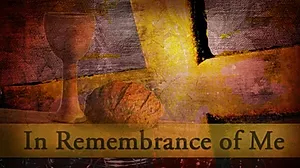
“This is my body which is given for you: this do in remembrance of me” ( Luke 22:19). On this night when Jesus’ mortal ministry was concluding, the declaration made by John the Baptist when that ministry had begun now meant more than ever-“Behold the Lamb of God” ( John 1:29).Īs a final and specially prepared Passover supper was ending, Jesus took bread, blessed and broke it, and gave it to his Apostles, saying, “Take, eat” ( Matt. Now, after all those years and all those prophecies and all those symbolic offerings, the type and shadow was to become reality. That, in turn, had been only a symbolic reiteration of what Adam and all succeeding prophets were taught from the beginning-that the pure and unblemished lambs offered from the firstlings of Israel’s flocks were a similitude, a token, a prefiguration of the great and last sacrifice of Christ which was to come (see Moses 5:5–8).
#Take this bread in remembrance of me free
Long ago the troubled and enslaved Israelites had been “passed over,” spared, finally made free by the blood of a lamb sprinkled on the lintel and doorposts of their Egyptian homes (see Ex. The season was that of the Passover, a celebration rich in symbolism for what was about to come. God’s own Son, his Only Begotten Son in the flesh, was about to become the Savior of the world. It would be the supreme contribution to a plan designed from before the foundation of the world for the happiness of every man, woman, and child who would ever live in it.

It would be the crowning moment of eternity, the most miraculous of all the miracles.

The hours that lay immediately ahead would change the meaning of all human history.


 0 kommentar(er)
0 kommentar(er)
